Traveling Abroad to Senegal to Make a Sustainable Difference
Do you want to make a difference in the world while traveling abroad in college?
Welcome back to our My Favorite College Experiences blog series, where UNH students share the experiences that impacted them the most, from study abroad and internships to student clubs and campus events! Today, Pedro Doukas ’26, a mechanical engineering major, shares five of his most memorable experiences from an International Changemaker Grant trip to Senegal.
What is the UNH International Changemaker Grant?
The UNH International Changemaker Grant (ICG) is a program that enables UNH students to participate in fully-funded international trips. Students, along with a faculty mentor, collaborate with regional organizations or nonprofits to create sustainable partnerships and solutions.
For my project, I was able to combine my interests in sustainability, energy, and engineering to propose a solar panel and irrigation system solution for a boarding school in Senegal, working with the Full Bucket Foundation. Here are my five favorite experiences from my ICG trip.
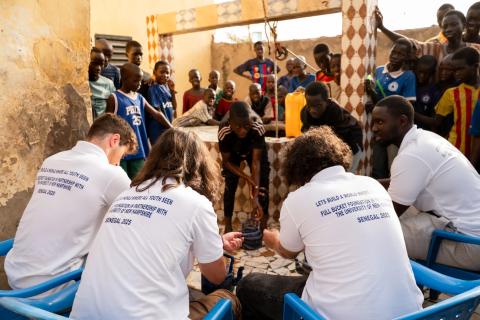
Daara students teaching us how to wash ourselves before praying (photo credit: Fatou Photography)
1. Meeting the students & officials
Our first day visiting the Daara (traditional Quranic school in Senegal) was spent talking to the students and school leaders as well as getting a tour of the farm to see the work that had already begun. We got to experience a Senegalese tradition in which meetings start with a verse from the Quran. With the help of Omar as a translator, we introduced ourselves to the Daara community and thanked them for their hospitality. Then, the religious leader of the Daara thanked us for our support and gave us a blessing. After our meeting, we were taught how to wash before prayer and how to perform the prayers.
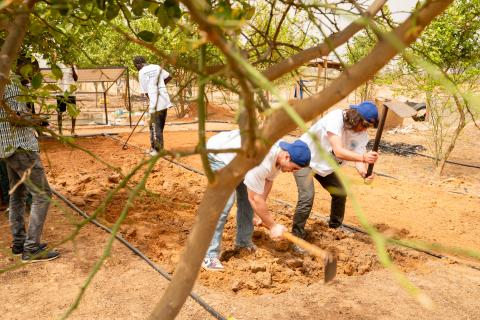
Tilling the soil with students raking behind us (photo credit: Fatou Photography)
2. Working on the farm
Once we arrived at the farm, we were able to see the progress that was already made. That month, the Daara couldn’t afford electricity, so it was perfect timing to have the solar panels installed just before our arrival. Additionally, the students had already set up the irrigation system for part of the farm. On our first day, we helped prepare the soil for planting seeds by first clearing away any debris, then tilling the soil, and finally raking it smooth. The students were happy to be able to work alongside each other and they seemed to have endless energy, while I was exhausted after just five minutes of labor.
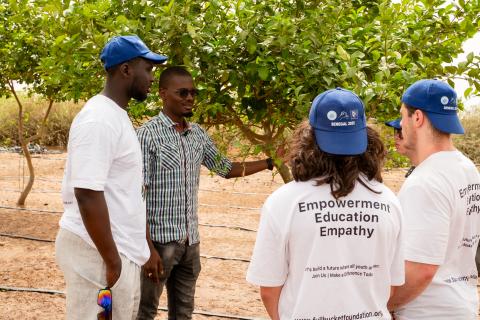
Mamadou Sow answering any questions that we had regarding farming techniques and regional economics (photo credit: Fatou Photography)
3. Learning about farming
We met with Mamadou Sow, an agroeconomist engineer, who taught us about farming techniques and agricultural economics. He explained how to properly incorporate compost to maintain nutrient-rich soil, allowing for sustainable farming. He also shared that planting bell peppers, a very valuable crop, could significantly increase revenue for the farm due to seasonal economic demand. Mamadou was a great resource and was happy to answer all our questions.
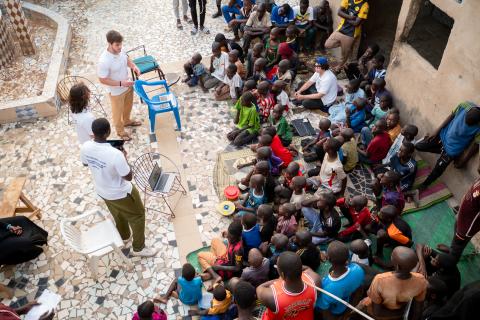
Presenting sustainability to the Daara students (photo credit: Fatou Photography)
4. Teaching the students
Our last day at the Daara was spent teaching the students about sustainability and introducing them to some English phrases. During our sustainability presentation, we explained the United Nation’s Sustainability Development Goals, discussed what sustainability means, and then focused on solar power. To finish off the presentation, we spoke about sustainability in the context of ethics and the relationship between each other and the Earth. We wanted to emphasize the idea that respecting and caring for the environment is essential.
Seeing how eager these students were to learn, and how they asked us to teach them English, gave me valuable perspective. Due to a lack of resources and infrastructure, these students are unable to learn subjects that we would typically consider elementary. The ability to access an education should never be taken for granted. A free and accessible education system is vital for the future of human growth and development.
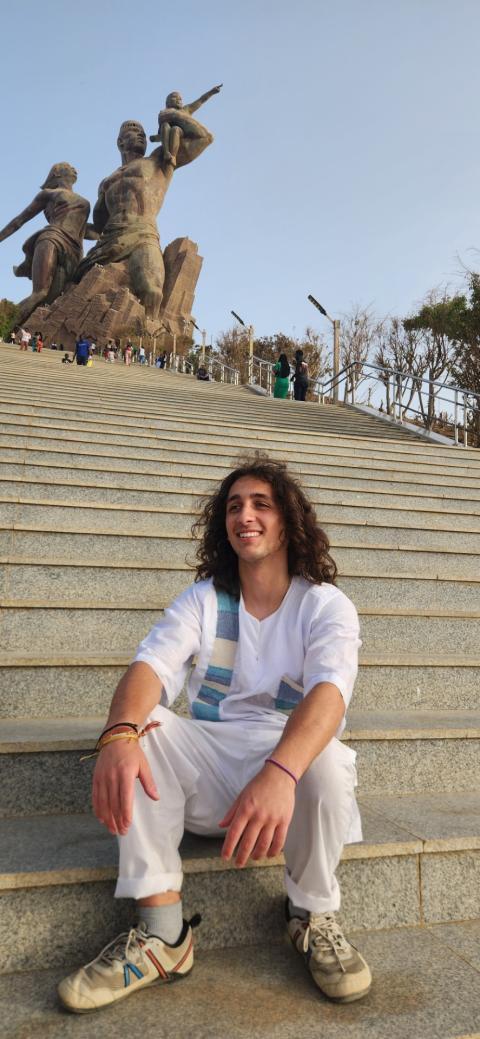
Taking a rest break halfway up the stairs to the African Renaissance Monument
5. The African Renaissance Monument
When we weren‘t at the Daara, Full Bucket Foundation took us to several significant cultural locations. One of my favorites was the African Renaissance Monument, the tallest statue in Africa, standing over 170 feet high. Inside, there is a museum that showcases works from across Africa and from many time periods. The monument depicts a family where a father holds his child with the child's hand pointing up, representing the future, and a mother whose hand points down and behind her to Gorée Island, symbolizing Africa’s past.
Gorée Island was one of the largest hubs in the transatlantic slave trade. It was seen as a final destination, where the enslaved knew they would never return. Being able to learn directly from the people whose communities were affected by colonialism and see and feel its lasting effects to the region is something a history textbook cannot capture. Learning about the history of political corruption, economic challenges, and all the ways people are actively working to overcome these issues was profoundly inspiring and gives me great respect for the resilience of the people.
Taking part in the International Changemaker Grant program and traveling to Senegal was an unparalleled experience. Seeing the good that I can put into the world with my education and resources makes me proud and hopeful for the future. ICG projects are eye-opening experiences that I would highly recommend. They allow you to contribute to positive, real-world change while being immersed in a new environment and culture in a way that cannot be taught in the classroom.
